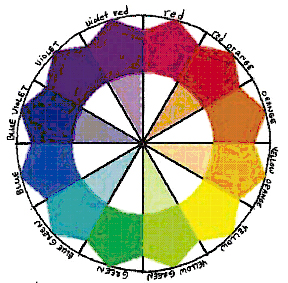|
In early arts classes we all learn
that there are three primary colours: red, blur and yellow. We can
then create any other colour by mixing the three primary colours in
different ratios. The colour green for example results from an equal
mix of blue and yellow paint. This system was first developed by Sir
Isaac Newton in 1666 when he published the first circular diagram of
colours. Obviously the effects of mixed paints have been known
before but Newton
supplied the first rigorous theory of primaries and the colour
circle which fairly precisely describes the result of any
combination of primary colours. Clearly this system treats ‘colour’
as a property of paint or objects in
general.
 |
Usually at this point in our education no
explanation is given why paints demonstrate this behaviour but
we can readily verify the mixing theory experimentally. Mixing
different ratios of primary colours allows us to reproduce all
the colours found on the painters colour wheel. Unfortunately
to very important ‘colours’ aren’t present on the colour
wheel: black and white. No combination of the three artistic
primary colours yields either a perfect black or white and in
fact while we can at least produce something akin to
brown-black sludge, we cannot ‘lighten’ our mix past the
appearance of pure yellow (one of the primaries). To obtain a
more complete theory of colour, we thus need to look a bit
closer at the mechanism that causes an appearance of colour.
The first step in this direction is to the physical properties
of light, which is after all the link between objects and our
eyes. |
| 


